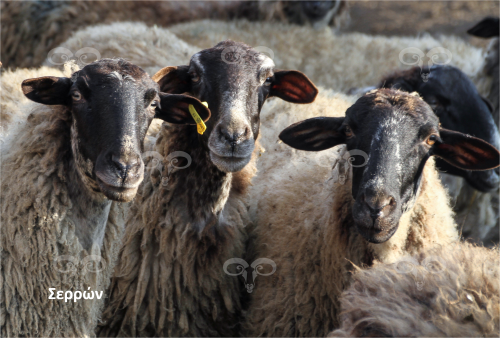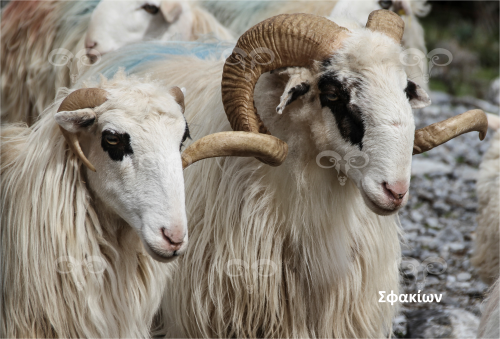Domesticated sheep (Ovis ammon forma aries or Ovis aries) are members of the artiodaktyla order, the ruminantia sub-order, the Bovidae family and share the Caprinae sub-family with the goat. Sheep domestication is thought to precede that of other farm animals. It probably occurred approximately 11,000 years ago, almost simultaneously with domestication of goats.
Wild sheep traits such as their relatively small size, the propensity to form close-knit groups (herd instinct), the ability to survive on a meager diet and their adaptability, contributed to their domestication and dissemination nearly everywhere in the world. The variety of climatic conditions and terrain led to the creation of more than 900 breeds of sheep. Nowadays, more than 1.5 billion sheep are bred worldwide for the production of wool, meat, milk, skins, manure etc.
Evidence from bone remains found in the Fragthi cave in Argolis (Peloponnese) suggest that sheep were first introduced into Greece by farmers and livestock breeders arriving 7,000-8,000 years ago. Conditions in Greece were conducive to sheep breeding, evidence of which is provided by countless archaeological findings and written sources spanning through the pre-historic, Homeric and historic periods. In Greek mythology Olympian gods such as Hermes and Apollo were designated as protectors of flocks. In antiquity sheep were bred for their meat, milk and wool. Archaeological findings relating to sheep abound through out the Mediterranean basin. Herodotus, Xenophon, Aristotle and other ancient authors describe in detail the conformation, breeding and productivity traits of sheep, as well as how breeds differ among countries.
The Old Testament’s account of Abraham’s sacrifice of a ram, instead of his son Isaac. Moreover, in the Christian religion the faithful are represented as a flock of sheep and in a wider sense the lamb symbolizes Christ’s sacrificial virtuous innocence. In the Roman and later in the Ottoman periods sheep breeding of a mostly nomadic nature evolved in all mountain ranges of the Balkans by pastoralist populations such as the Vlachs and the Sarakatsans.
In Greece’s, recent history the number of sheep mirrored a corresponding increase of the country’s human population and expanding territories. The sheep population in Greece from the 1960s until the early 2000s ranged from 8-9.5 million animals. Sheep were the most precious livestock in rural areas, providing valuable products such a milk, cheese, yoghurt, meat, wool, skins manure etc.
Nowadays, sheep breeding constitutes a significant niche in the country’s primary sector supplying meat and dairy produce, with the latter providing “raw material” for making yoghurt and select trademarked (Appellation d’Origine contrôlée [AOC]) cheese such as Feta.
The great variability of the Greek terrain created many noteworthy breeds of indigenous sheep. Nonetheless, the overwhelming majority of sheep currently bred in Greece are not pure due to crossbreeding and the importation of foreign genetic material. The risk of losing the autochthonous sheep breeds of Greece with their unique characteristics is imminent. Of the approximately 40 mentioned breeds, fewer than 10 enjoy a ‘Not at Risk’ status, while the remaining breeds are threatened of extinct.



































